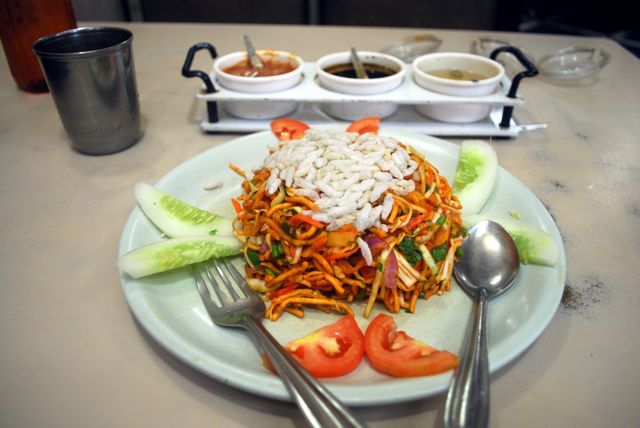I am now on a panel of columnists writing the Cityscope column from different world cities for the Sunday Post magazine of South China Morning Post. I have written a couple of pieces for them already – nothing yet on travel but that is on the cards. The column looks at lifestyle, food, arts, pop culture – anything Chinese, from an Indian perspective.
My first column kicked off yesterday with a piece on Chinese street food in India… (link is not available since the website is only for subscribers – will try to upload a pdf soon)
Chindian, anyone?
After it was first brought to India by immigrants to Calcutta, Chinese food in the country slowly turned into “Chindian”, with the addition of local spices and flavours. However, it is in Mumbai where Chindian food has come into its own.
At about 5pm every day, a specific kind of hunger seizes the city. Lunch is a distant memory and it’s too early to entertain thoughts of dinner. All roads then lead to the friendly neighbourhood chaatwala – vendors who ply the streets, selling fried, spicy snacks from handcarts. The only question here is: Indian or Chinese?
The Chinese dishes sound familiar – but there are a few surprises. Chow mein in its local vegetarian guise is anything but a simple stir-fry. Vegetables of all shapes and colours go into it, from green peas and carrots to paneer (cottage cheese). Then there’s the popular American-Chinese chop suey. Gobi and chicken Manchurian is a Mumbai original: deep-fried cauliflower and chicken fritters dunked in various sauces.
The latest trend on the street, however, is the Sinification of Indian food. The simple South Indian dosa (a crepe made of rice batter) is now available as a Sichuan dosa, filled with stir-fried noodles. I’ve heard rumours about a chow mein samosa (triangular deep-fried pastries usually filled with spicy potato), but I haven’t been adventurous enough to verify this. And there’s a new best-seller.

Chinese bhel has firmly lodged itself in the minds – and stomachs – of Mumbai residents. It is an optimal combination of all the flavours that satisfy the Indian palate, it is healthier than most other street snacks and it is the cheapest way to “eat Chinese”. Furthermore, it’s the one of the city’s few street snacks that has its own Facebook page.





As one who isnt too fond of “chinese” and avoids eating it as far as possible, I am probably the wrong person to comment on this. But i loved reading it, and esp those references to the chinese dosa, which hubby loves…. and the chinese samosa, which my son unknowingly tried out sometime back, only to gape at what was inside 🙂
Awesome post 🙂
When I was living in Shanghai, I used to CRAVE for Chinese food…the Chindian food as you put it. There’s nothing quite like a spicy gobi manchurian coupled with hakka noodles.
I wrote a blog post on eating out in China.. as a vegetarian !!
Anu, I loovvvve Chinese food – Indian Chinese, that is. in Bombay, I used to have the dosa all the time – but at chowmein samosa, I draw the line! but I doubt if I will be able to eat Chinese food without the local masala trimmings 🙂
Yogesh – eating in China as a vegetarian? there is hope for me yet – I can travel to China and survive?
There is no Bhel in Chinese Bhel. True or False?